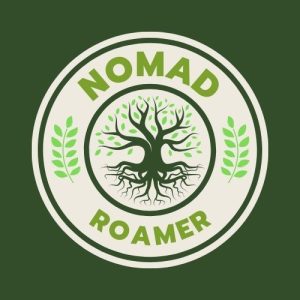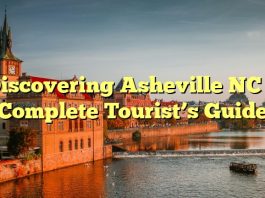Cultural and Historical Significance of Crater Lake
The Formation of Crater Lake
Crater Lake is nestled in the Cascade Mountains of southern Oregon and is often revered for its deep blue hue and clarity. The lake is the remnant of a collapsed volcano, Mount Mazama, which erupted over 7,700 years ago. This cataclysmic blast led to the formation of the caldera now filled by the lake. Visitors find themselves marveling not just at the natural beauty but at the immense geological forces that shaped this stunning landscape.
Native American Heritage
The Klamath tribe holds Crater Lake in high spiritual regard. Before it became a national park, this site was deeply embedded in the mythologies and cultural practices of the local Native American tribes. When visiting, you might consider taking a guided tour that explores the rich cultural tapestry surrounding the lake and the traditional stories passed through generations by the Klamath and other tribes.
The Establishment of the National Park
In 1902, President Theodore Roosevelt established Crater Lake National Park, recognizing the unique geological, ecological, and aesthetic values of the area. Today, it’s one of the most visually stunning protected areas in the United States, offering numerous insights into both volcanic activity and ecosystem resilience.
Activities to Enjoy Around Crater Lake
Hiking Adventures
For many, the heart of the Crater Lake experience lies in its numerous hiking trails. With options varying from easy walks to strenuous hikes, there’s something for every level of adventurer. Here’s a breakdown of some popular trails:
Rim Trail
The Rim Trail is a must-do. This 33-mile trail weaves along the caldera, offering continuous striking views of the lake below. Whether setting out for a section or tackling a longer day hike, this trail showcases some of the best vantage points.
Garfield Peak Trail
For those willing to tackle a more challenging hike, Garfield Peak offers elevation gains rewarded by one of the most spectacular panoramic views available in the park. The 3.4-mile round-trip is steep but truly worth the effort for the vistas at the top.
Wizard Island Trail
You can make the hike to Wizard Island as part of a boat tour, which we’ll get into more later. Once on the island, hiking to the summit of the island offers a unique perspective of the lake from within the caldera.
Boat Tours and Lake Cruises
Experiencing Crater Lake from the water is simply unforgettable. Boat tours, available from Cleetwood Cove during the summer months, provide visitors a new vantage point and a unique perspective on the lake’s serenity.
Tour Highlights
While on a boat tour, you’ll get the opportunity to see the famous Phantom Ship rock formation up close and personal. This small natural rock island bears a resemblance to a ghostly ship floating in the water. The tours are also guided by knowledgeable rangers who offer rich insights into the lake’s natural history and geology.
Combining Boat Tour with Island Exploration
For those looking to explore deeper, consider taking a boat tour that includes a start and stop at Wizard Island. This offers hikers a dual perspective – both from the water and from the geography unique to this small island.
Wildlife and Bird Watching
Crater Lake isn’t just about scenic views; it’s a dynamic ecosystem teeming with wildlife. From Ponderosa pines to unique bird species, visitors eager to witness wildlife won’t be disappointed.
Fauna
Commonly sighted mammals include deer, foxes, and even black bears. While wildlife is abundant, always remember to maintain a safe distance and bring binoculars for better viewing.
Bird Enthusiasts
Bird watchers will rejoice in spotting species like Clark’s Nutcracker, Mountain Bluebirds, and the endangered Spotted Owl. The varied habitats, from deep forests to rocky outcrops, host a diverse range of avian species.
Planning Your Visit to Crater Lake National Park
Best Times to Visit the Park
Crater Lake National Park is open year-round, but the experiences it offers differ vastly depending on the season.
Summer at the Park
Summer (July to September) is the most popular time to visit, as snow has typically melted, revealing the full beauty of the park. During this time, all trails and roads usually open, including the main Rim Drive.
Winter Wonderland
Winter brings a different kind of magic to the park. With deep snows and tranquil landscapes, activities shift to snowshoeing and cross-country skiing. The park’s main Rim Village remains accessible, but be prepared for partially closed roads due to snow.
Accommodations and Camping Options
A visit to Crater Lake can span a single day, but staying longer allows a better appreciation for its wonders.
Crater Lake Lodge
The historic Crater Lake Lodge offers rustic accommodations with modern comforts. Situated in Rim Village, it’s the only hotel right at the lake’s edge, offering the pleasure of waking up to a sunrise over Crater Lake.
Campgrounds
Mazama Village Campground is the primary camping site, located below the rim and accessible within the park. Featuring over 200 campsites, it provides a cozy, forested retreat typically open from June to September. Reservations are recommended during peak seasons.
Backcountry Camping
For the more adventurous, backcountry camping is permitted with a free permit. This offers an unparalleled opportunity to delve deeper into the park’s wilderness areas. Always remember to adhere to Leave No Trace principles to help preserve these natural habitats.
Accessing the Park: Travel Tips
Whether you’re making a day trip or an extended stay, visiting Crater Lake involves some planning.
Getting There by Car
Located in the southern part of Oregon, Crater Lake is a fairly straightforward drive via Route 62. If you’re coming from Medford or Bend, the drive will take approximately 2.5 hours.
Public Transportation Options
For those without a personal vehicle, consider using public transit options like Greyhound buses to reach the nearby cities. Unfortunately, direct service to the park is not available, so some additional planning for car rentals or shuttle services will be necessary.
Weather Conditions and Road Closures
Before setting out, check the park’s current weather conditions and road status. Snow can linger late into the season, leading to occasional road closures. The park’s official website provides real-time updates.
Local Dining and Supplies
Dining Options Inside the Park
If you’re hoping for dining with a view, Crater Lake offers a few options to fill your belly as you drink in the scenery.
Cleetwood Cove
There’s a small snack stand at Cleetwood Cove. It’s perfect for grabbing a quick bite or refreshments after hiking the Cleetwood trail.
Rim Village Café
Located near the lodge, Rim Village Café offers a range of light meals and beverages to enjoy on the go or on the deck with views of the lake itself. It’s a welcome stop after a long hike or as a lead-up to a full day in the park.
Grocery and Supply Shopping
When visiting, particularly with the goal of camping, be sure to stock up on supplies beforehand.
Grocery Options
The park doesn’t have full-service grocery facilities, so plan to stop in larger towns like Klamath Falls or Medford for all your camping and picnicking needs. These locations offer large supermarkets and specialty shops before you drive deeper into the park.
Gift Shops within the Park
Rim Visitor Center has a small gift shop where you can pick up souvenirs, books, and some basic snacks. It’s worth a browse, especially for any educational materials you might want to enhance your visit.
Essential Tips for Visitors
What to Bring
Preparation can significantly enhance your Crater Lake adventure. Here's a checklist of essentials:
Clothing and Gear
No matter the season, weather can be variable. Bring layers, sunscreen, hats, and sturdy hiking boots. If visiting in winter, pack additional snow gear such as snowshoes or cross-country skis.
Safety Equipment
Particularly for hikers, consider a daypack with water, snacks, a first aid kit, and navigation tools like maps and a compass or GPS unit. For longer hikes, water filtration tools can be valuable.
Staying Safe
As with any visit to a national park, your safety is paramount.
Avoid the Ledge
Crater Lake’s steep cliffs are a marvel to behold but explore cautiously. Stay clear of cliff edges and heed all park warnings about unstable ground and rock falls.
Wildlife Encounters
Wildlife can be exciting to encounter, but always observe from a distance. Never feed animals, as this disrupts their natural behaviors and can provoke aggression.
Interacting Respectfully with the Environment
The park’s beauty is preserved through respect for its environment. Here's how you can contribute to its upkeep:
Leave No Trace
Adopt Leave No Trace philosophies by bringing packed lunches and ensuring you pack out all waste. By minimizing your impact, you make sure Crater Lake remains pristine for future generations.
Sticking to Designated Trails
Walking beyond trails can thin vegetation and lead to erosion. To conserve these landscapes, always walk designated paths and respect all signage.
Crater Lake's Understated Grandeur
With its captivating beauty, diverse activities, and rich history, Crater Lake National Park offers various opportunities for every visitor to connect deeply with nature. Though this guide has shared many aspects of enjoying the park, always remain open to the spontaneous joys you might find along the way. Whether it’s a quiet moment of solitude gazing over serene waters or spotting a rare bird amid the trees, the true beauty of Crater Lake lies in its power to enchant and inspire those who wander through its natural magnificence.




